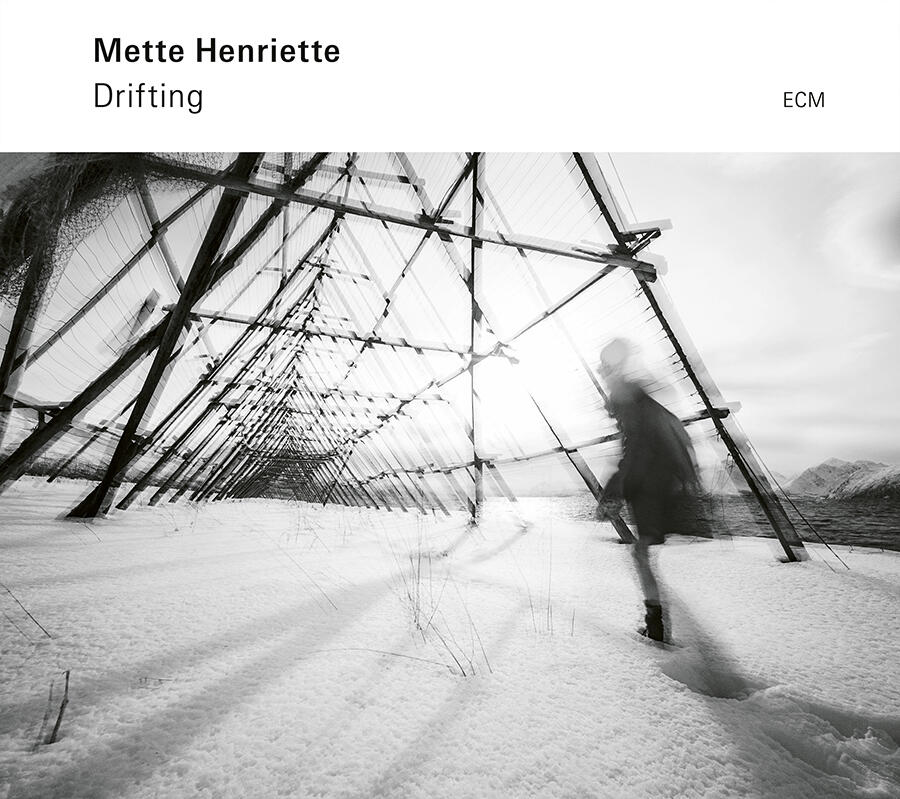Mette Henriette Embraces Immediacy
The Sami-Norwegian saxophonist and composer speaks with Emily King about her new album, playing in museums and what’s next
The Sami-Norwegian saxophonist and composer speaks with Emily King about her new album, playing in museums and what’s next

Mette Henriette’s newly released second album, Drifting, arrives seven years after her first. While the initial record included music written over the previous ten years and was performed by various ensembles, including tango musicians and a classical orchestra, Drifting focusses on her trio of saxophone, cello and piano, and emerges from a few months of concentrated composition and rehearsal. Recorded in the newly built Munch Museum in Oslo, it touches on many genres – jazz, contemporary classical, folk – but is not subsumed by any one of them. Henriette’s music triumphs through its gentle intensity. – Emily King

Emily King How would you characterize Drifting?
Mette Henriette It’s in motion, not static. We recorded it during the COVID-19 pandemic, so we had to adapt to restrictions. I had imagined recording some of the pieces with a larger ensemble but, consulting with my producer Manfred Eicher, we decided to take a deep dive into the trio. The album is a cross section in time, and I love that the music has already grown since it was recorded. My first album was recorded over such a long period of time that, once it came out, I felt it needed time to settle in the universe before I could move on. This one is completely different: it’s pointing to where it’s going rather than dwelling on itself.
EK I have found myself humming little snatches, particularly the riff in ‘Chassé’. There isn’t really an ‘ear-worm’ like that on your first album.
MH I felt the need to carve new paths on this album, and it has a lightness to it that comes from working with a trio. A more natural way to create this spirit would be with percussion and a base as part of a bigger ensemble, but I wanted to think of different ways of orchestrating.

EK Can we talk about the other members in your trio: the Swedish pianist Johan Lindvall and the Australian cellist Judith Hamann?
MH I have played with Johan since we met at the music academy ten years ago. I love his clarity; he has such delicate voicing and an elegant touch. Then there’s Judith, who is like my cello-playing sister from the other side of the world. I love how they both interpret and find their space within the music that I write for them.
EK How did you end up recording in the Munch Museum?
MH It was really by chance. I was working on something they were co-commissioning and, because of the pandemic, they let us use the auditorium to rehearse, even though their offices were closed. They had a beautiful new Steinway piano that had never been played. Drifting became that piano’s first musical adventure, which was so special. Initially, we were just experimenting, but then I sent the pieces to Manfred and we both thought: ‘It has something; let’s do this.’

EK What’s it like to work with Manfred?
MH He’s very alert to the needs of every record. In this case, we couldn’t meet during the recording because the borders were closed, but we spoke on the phone and emailed. We eventually met in Spring 2022, in Provence, to mix the record. I wanted to keep the creative process going until the mastering, so there was still room for us to discuss the big shapes. I recorded in such a way that we could shuffle things around in the sequence. Both Manfred and I love to work on the dramaturgy. He understands my way of thinking. He’s very intuitive, but also highly intelligent in his approach.
EK Does performing in art spaces create a particular experience?
MH The thing that I love about art spaces is that they’re so open: visually, but also energetically. I have played in several over the last few years – conventional white cubes, vast hallways with marble floors – and each experience was unique. In December, we played at the Musée d’Orsay in Paris. We were positioned on a bridge in the main hall that couldn’t fit a piano, so we played with a harpist instead. The response from the space was just wild. We played two sets, and our approach to each was very different. In the first, I felt very respectful of the space, listening to what we got back from it and not taking many risks. In the second, it was more like: ‘We’re going to play our hearts out and the room will have to deal with it.’ Somehow, the room responded, which was so special. In the first set, I felt it was the room first and the music after; but, in the second set, the music came first.
EK Are there any elements of your Sami heritage in Drifting?

MH Some of the titles are rarely used Sami words which I learned from the poet Inga Ravna Eira when she helped me translate a couple of poems a few years ago. The Sami language has nuances that don’t exist in Norwegian or English – the two other languages I speak – so it felt very natural, but also political, for me to use these words.
EK What’s next?
MH I am really excited to be touring and working with different musicians. I’m enjoying being in that immediate moment because, during the pandemic, we couldn’t perform, so I was working with scores most of the time. Of course, I want to still write music, but I want more of a balance. I am super ready.
Main image: Mette Henriette portrait. Courtesy: © Anton Corbijn and ECM Records






















